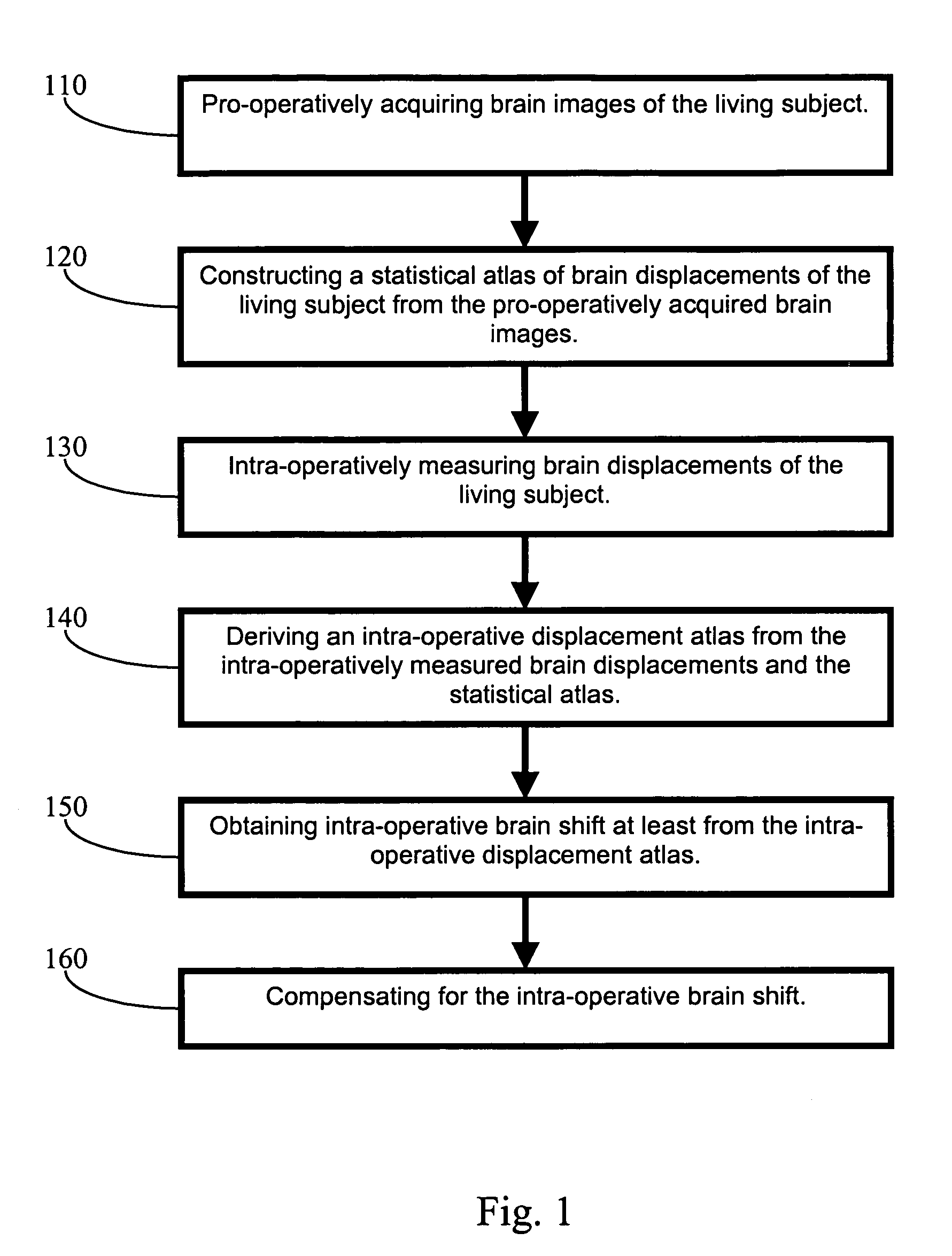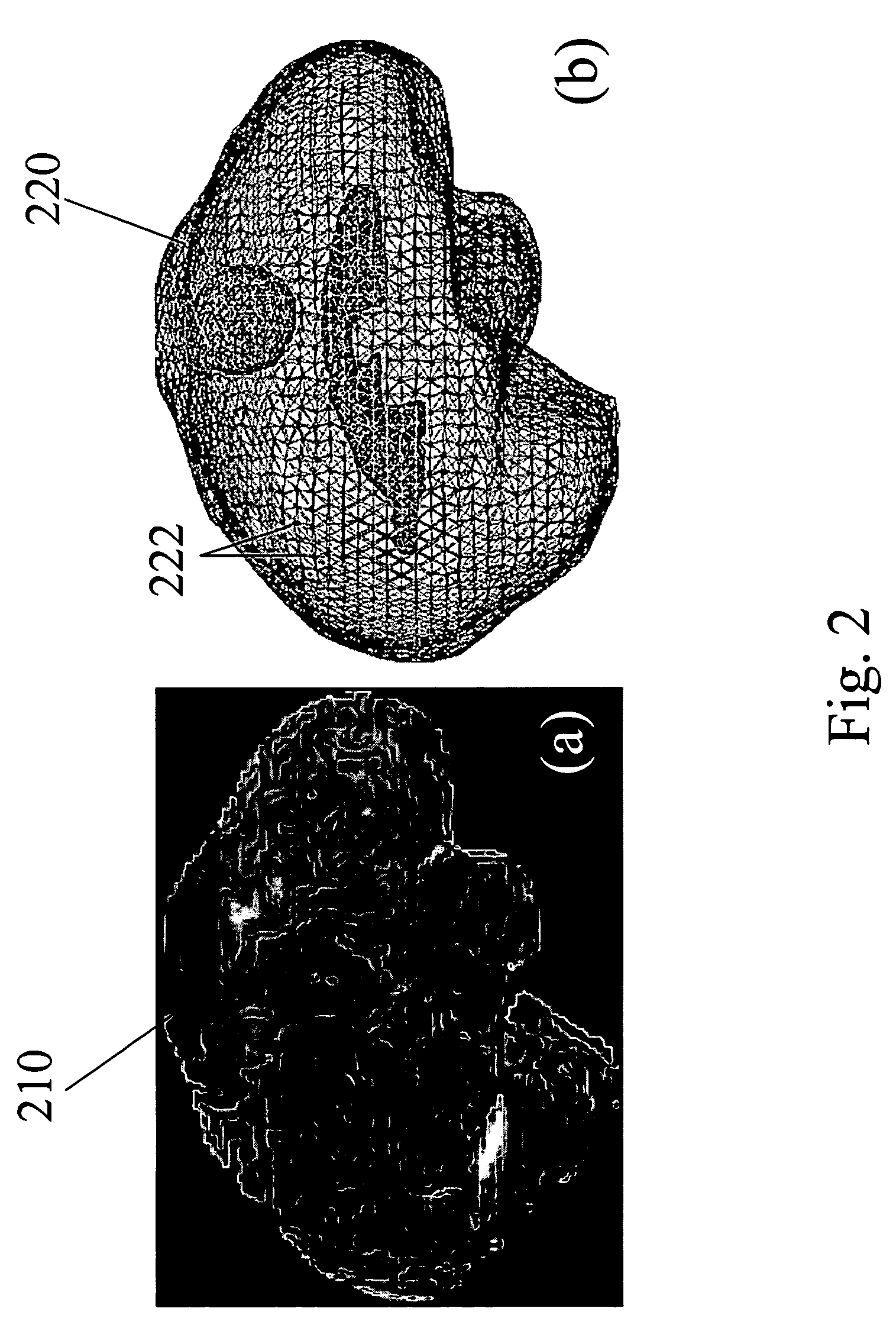Apparatus and methods of brain shift compensation and applications of the same
a brain shift and apparatus technology, applied in the field of image-guided surgery, can solve the problems of limited surface alignment techniques, scalps lacking geometric specificity, skin surface deformation,
- Summary
- Abstract
- Description
- Claims
- Application Information
AI Technical Summary
Benefits of technology
Problems solved by technology
Method used
Image
Examples
example 1
Animal Experiment
[0056]To evaluate the accuracy and effectiveness of the computational model for predicting of brain deformations, in vivo experiments were conducted with a porcine. In these experiments, a porcine brain was implanted with small CT-visible markers in a grid-like fashion using a needle. Following implantation, a series of gradual deformations consistent with neurosurgical loading rates were applied and recorded using the CT. By recording the bead positions in each image volume, a complete subsurface trajectory for all deformation stages was determined. Following the experiment, subject-specific finite element models of all test subjects were constructed from the pre-operative MR and registered to the CT data set. Deformations applied in the OR were now applied in simulation and bead trajectories were compared to ascertain model-predictive fidelity. In addition to uni-axial deformations, validation with realistic loading conditions such as from the retraction of tissue...
example 2
Clinical Trials
[0059]In one embodiment of the present invention, four patients who undergo brain surgery were chosen to gather data for evaluating the invented method. The four patients were employed merely as an example to acquire data for practicing the present invention, and the use of the four patients should not limit the scope of the present invention. Each patient was assigned a number from Patent 1 to Patient 4 as his or her identification. Additionally, prior to clinical data acquisition, the surgical procedures for human patients were approved by the Vanderbilt University Institutional Review Board (hereinafter “VUIRB”) and patient consent was acquired for all clinical data.
[0060]In four clinical cases studying the effects of gravity-induced brain sag, features on the cortical surface (i.e. blood vessel bifurcations) were digitized and tracked in the OR in the direction of gravity. The cases involved 4 supine cases with 2 patients having the head in the neutral position an...
PUM
 Login to View More
Login to View More Abstract
Description
Claims
Application Information
 Login to View More
Login to View More - R&D
- Intellectual Property
- Life Sciences
- Materials
- Tech Scout
- Unparalleled Data Quality
- Higher Quality Content
- 60% Fewer Hallucinations
Browse by: Latest US Patents, China's latest patents, Technical Efficacy Thesaurus, Application Domain, Technology Topic, Popular Technical Reports.
© 2025 PatSnap. All rights reserved.Legal|Privacy policy|Modern Slavery Act Transparency Statement|Sitemap|About US| Contact US: help@patsnap.com



